#liquid chromatography
Text
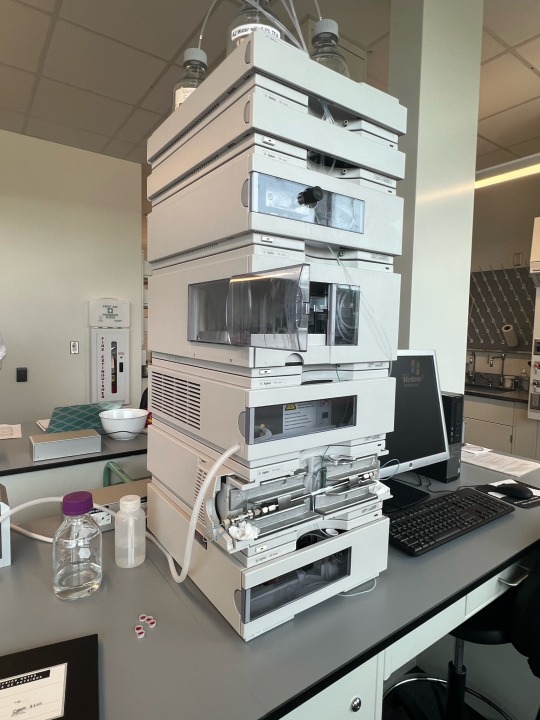
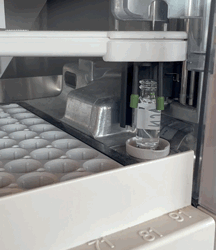
liquid chromatography!!
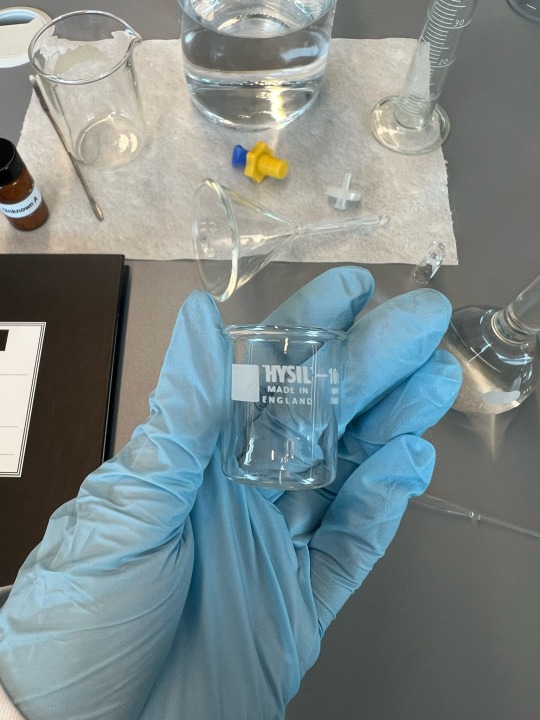
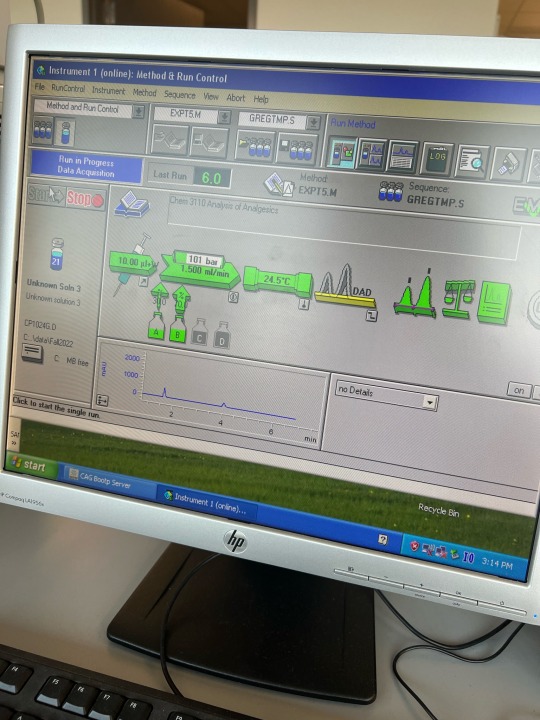
#i love tiny glassware#liquid chromatography#HPLC#chemblr#studying#studyspiration#undergraduate#stem major#chemistry#dark academia science#stem dark academia#laboratory#uni student#in the lab#student#studyblr#study motivation#studyspo#analytical chemistry
233 notes
·
View notes
Text
Enhancing Protein Purification with Fast Protein Liquid Chromatography
Protein purification is a crucial process in biochemistry and molecular biology, enabling the isolation of specific proteins from complex mixtures. This process is essential for studying protein structure, function, and interactions. Purified proteins are necessary for various applications, including drug development, enzyme studies, and structural bi ology. The ability to isolate proteins with high purity is fundamental to advancing scientific knowledge and applications.

Methods of Protein Purification
Several methods are used for protein purification, including precipitation, centrifugation, and chromatography. Chromatography, in particular, offers high specificity and resolution, making it a preferred choice for purifying proteins. Each method has its advantages and limitations, depending on the nature of the protein and the desired purity. Combining multiple methods can enhance the overall efficiency and yield of the purification process.
Role of Fast Protein Liquid Chromatography
Fast Protein Liquid Chromatography (FPLC) is a specialized form of liquid chromatography designed for protein purification. FPLC systems operate at lower pressures than high-performance liquid chromatography (HPLC), making them suitable for delicate protein molecules. This technique ensures high purity and yield of the target protein. FPLC is widely used in both research and industrial settings due to its efficiency and reliability. The ability to handle large sample volumes is another advantage of FPLC systems.
Applications of FPLC in Research
FPLC is widely used in both academic and industrial research settings. It is essential for the production of recombinant proteins, purification of antibodies, and characterization of protein complexes. The technique's ability to handle large volumes and achieve high resolution makes it invaluable for protein research. FPLC is also used in the pharmaceutical industry for the development and production of biopharmaceuticals. Its versatility and reliability make it a staple in many laboratories.
Advantages of FPLC
FPLC offers several advantages, including gentle handling of proteins, high reproducibility, and the ability to separate proteins based on various properties such as size, charge, and affinity. These features make FPLC a versatile tool for purifying a wide range of proteins. The automated nature of FPLC systems reduces the risk of human error and increases the efficiency of the purification process. Additionally, FPLC can be easily scaled up for industrial applications, making it suitable for both small-scale research and large-scale production.

Conclusion
Protein purification, facilitated by techniques like fast protein liquid chromatography, is vital for advancing our understanding of biological processes. FPLC provides researchers with the tools to isolate and study proteins with high precision and efficiency. As technology evolves, FPLC systems will continue to improve, offering even greater capabilities. For more information on advanced protein purification systems, visit inscinstech.com.cn.
Blog Source URL:
#Chromatography#Liquid Chromatography#oligonucleotide synthesis#DNA Synthesizer#lab equipment#AKTA#protein purification#Fast Protein Liquid Chromatography#FPLC#fplc chromatography
0 notes
Text
Protein purification system Inscinstech
#protein purification system#Liquid Chromatography#Chromatography#Fast Protein Liquid Chromatography#Inscinstech
1 note
·
View note
Text
i wonder if danmakufu could incorporate fast fourier transforms. like, just for a (mostly) single-frequency function where there's a boundary on the screen that the function passes and after that boundary you get the fast fourier transform. i know you can do weird stuff like youkai polygraph in C but idk of a program that does FFTs in a C-derived language?
#if i do give orime danmaku it'll probably be in the context of a full game anyway#coming to you in 2029#of course it wouldn't all be NMR she's a former agilent employee so she gets UV-Vis and gas/liquid chromatography and FTIR and stuff#and patents and service contracts
6 notes
·
View notes
Text
The Liquid Chromatography Mass Spectrometry Market in 2023 is US$ 5.71 billion, and is expected to reach US$ 14.36 billion by 2031 at a CAGR of 12.22%.
#Liquid Chromatography Mass Spectrometry Market#Liquid Chromatography Mass Spectrometry Market Share#Liquid Chromatography Mass Spectrometry Market Size
0 notes
Text
Liquid Chromatography with Tandem Mass Spectrometry
Liquid Chromatography with Tandem Mass Spectrometry (LC-MS/MS) is a laboratory testing technique used to analyze and identify small molecules in a sample. It is a powerful analytical tool that can detect and quantify trace levels of compounds in complex sample matrices. The technique combines two analytical systems, liquid chromatography (LC) and tandem mass spectrometry (MS/MS), to obtain detailed information about the sample.
If we talk about the advantages of Liquid Chromatography with Tandem Mass Spectrometry, It is a highly sensitive and selective technique. It can detect and quantify trace levels of compounds in complex samples, and it can be used to identify a wide range of compounds.
0 notes
Text
#High-Performance Liquid Chromatography Market: Leading Players Developments#Innovations#and Advanced Technologies#Forecast 2032
0 notes
Text
What is High Performance Liquid Chromatography (HPLC)
High Performance Liquid Chromatography (HPLC) is a sophisticated analytical method used to separate, identify, and quantify components within a mixture. This technique is pivotal in fields such as pharmaceuticals, environmental testing, and food safety.
Introduction to HPLC
HPLC is a core technique in analytical chemistry, often utilized for quality control (QC) and quality assurance (QA) in…
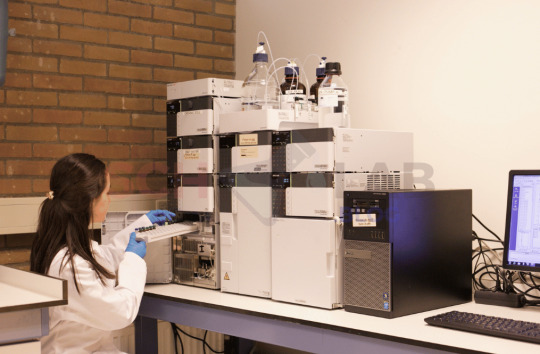
View On WordPress
1 note
·
View note
Text
Gas Chromatography
Gas chromatography (GC) is a powerful analytical technique used for separating and analyzing volatile compounds present in a sample. It operates on the principle of differential partitioning of analyte molecules between a stationary phase and a mobile phase (carrier gas)

1 note
·
View note
Text
Advancements in Oligonucleotide Synthesis and DNA Synthesizers
Oligonucleotide synthesis is a fundamental process in molecular biology involving the creation of short DNA or RNA sequences. These oligonucleotides serve as primers, probes, and therapeutic agents, playing critical roles in genetic research and biotechnology. The ability to synthesize specific sequences has revolutionized genetic engineering and diagnostics. Advances in this field have led to the development of more efficient and accurate synthesis techniques.
The Process of Oligonucleotide Synthesis
Synthesis involves sequentially adding nucleotides to a growing chain, following a predetermined sequence. This process is typically automated and carried out on solid supports, ensuring high accuracy and efficiency. The synthesis of oligonucleotides has become faster and more reliable with advances in technology. Researchers can now produce longer sequences with fewer errors, enhancing the scope of genetic research. The automation of synthesis has also reduced the time and labour required for large-scale production.

Importance of DNA Synthesizers
DNA Synthesizer is specialized instruments designed to automate the synthesis of oligonucleotides. These machines have revolutionized the field by significantly reducing the time and labour required for synthesis. Modern DNA synthesizers offer high throughput, enabling the production of numerous oligonucleotides simultaneously. This efficiency is crucial for high-demand applications such as genomic research and therapeutic development. The precision and reliability of these instruments are essential for ensuring the accuracy of synthesized sequences.
Applications of Oligonucleotide Synthesis
Oligonucleotide synthesis have a wide range of applications, from basic research to clinical diagnostics and therapeutics. They are essential for polymerase chain reactions (PCR), DNA sequencing, and gene editing. In therapeutics, synthetic oligonucleotides are used in antisense therapies and RNA interference (RNAi) technologies. These applications are driving advances in personalized medicine and genetic therapies. The versatility of oligonucleotides makes them invaluable tools in both research and clinical settings.
Innovations in DNA Synthesizers
Recent advancements in DNA synthesizers have focused on increasing the efficiency and accuracy of synthesis. These innovations include improved reagents, automated error-checking, and integration with bioinformatics tools. As a result, researchers can now synthesize longer and more complex sequences with greater confidence. The integration of advanced technologies has streamlined the synthesis process, reducing costs and increasing accessibility. These innovations are paving the way for new discoveries and applications in molecular biology.

Conclusion
Oligonucleotide synthesis and DNA synthesizers have transformed molecular biology and biotechnology. The ability to quickly and accurately synthesize custom DNA sequences has opened up new possibilities for research and therapeutic applications. As technology continues to advance, the impact of these tools will only grow. For the latest in DNA synthesis technology, visit inscinstech.com.cn.
Blog Source URL :
#Chromatography#Liquid Chromatography#oligonucleotide synthesis#DNA Synthesizer#lab equipment#AKTA#protein purification#Fast Protein Liquid Chromatography#FPLC#fplc chromatography
0 notes
Text

Liquid Chromatography - Mass Spectroscopy
Liquid Chromatography - Mass Spectroscopy is table top unit with the hyphenated combination of liquid chromatography and mass spectroscopy for chemical separation and identification of organic molecules. It is equipped with powerful electric spray ionization technique makes the LC-MS chart and data processing simpler.
0 notes
Text
Type of buffer in Hplc
Phosphate buffer
Citrate buffer
Formate buffer
Acetate buffer
Tris(hydrixymethyl) -aminomethane
Phosphate buffer
Pka 2.1
Ph range 1.1 tob3. 1
Pka 7.2
Ph range 6.2 to 8.3
Pk 12.3
Ph range 11.3 to 13.3
Citrate
Pka 3.1
Ph range 2.1 to 4.1
Pka 4.7
Ph 3.7 to 5.7
Pka 5.4
Ph range 4.4 to 6.4
Format
Pka 3.8
Ph range 2.8 to 4.8
Acetate
Pka 4.8
Ph range 3.8 to 5.8
View On WordPress
#Analytical chemistry#CAPA#Chromatography#Gas chromatography (gc)#glp#GMP Updates#High performance liquid chromatography#Interview preparation#Method validation#OOS#optical rotation#Out of specification#QMS#self discovery#type of stability#uv
0 notes
Text
https://twikkers.nl/blogs/244162/Liquid-Chromatography-Mass-Spectrometry-Market-Analysis-Size-Share-and-Forecast
The Liquid Chromatography Mass Spectrometry Market in 2023 is US$ 5.71 billion, and is expected to reach US$ 14.36 billion by 2031 at a CAGR of 12.22%.
#Liquid Chromatography Mass Spectrometry Market#Liquid Chromatography Mass Spectrometry Market Forecast#Liquid Chromatography Mass Spectrometry Market Report
0 notes